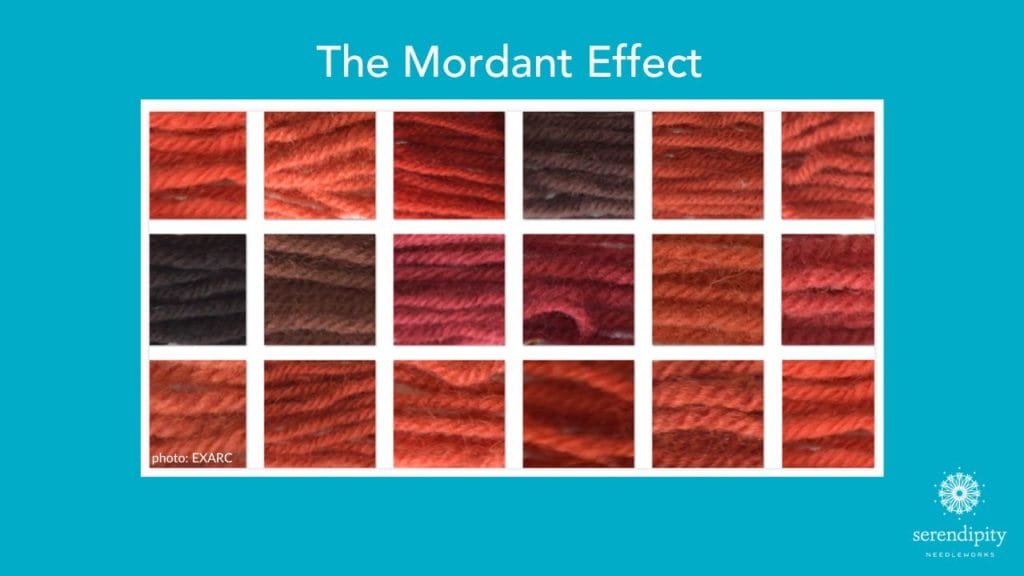If you’re at all like me, one of your favorite things about needlepoint is all of those gorgeous threads. You probably don’t think much about how your needlepoint threads got to be the colors they are, though, do you? I didn’t either, when I first began stitching. 😉 I believe that there’s great value in understanding how the dyeing process works, though…
As needlepoint artists, it’s important to understand as much as we can about the tools and materials we use to create our masterpieces. So, let’s take a peek at dyeing needlepoint threads…
The first thing you need is, of course, thread.
There are three kinds of threads: animal, plant, and man-made.
Animal fiber threads include alpaca, angora, mohair, wool and silk. (There are other animal fibers, but these are the most common ones for making needlepoint threads.) For example, Wisper is primarily kid mohair, with a little bit of nylon for extra strength. Alpaca 18 is 100% natural alpaca fiber and Splendor is 100% silk.
Plant fiber threads include bamboo, cotton, hemp, linen, and soy. Cotton is, by far, the most common plant fiber. For example, DMC cotton embroidery floss is 100% long staple cotton, and so is Threadworx Hand Overdyed Floss, Weeks Dye Works, Classic Colorworks, and The Gentle Art Sampler and Shaker Threads. Mandarin Floss, from Rainbow Gallery, is 100% bamboo and Rainbow Linen is – get ready for it… 100% linen! 😉
Finally, man-made fiber threads are synthetic through and through. Some examples of those include Kreinik braids (65% polyester/35% nylon), Flair (100% nylon), Neon Rays (89% rayon/11% metalizied polyester), Very Velvet (100% nylon), and Frosty Rays (50% Nylon, 32% Viscose, 18% Polyester).
Knowing the fiber type of the base thread is important because if affects your dye choice.
Undyed thread is called your base thread.
A base thread can be natural or bleached. Let’s use Vineyard Merino wool as an example.
Here’s a picture of Vineyard Merino Natural beside Vineyard Merino Bright White…

Natural is the actual color of the sheep’s fleece and Bright White is bleached which makes it look more pristine.
That means the color of the base thread will affect the color of the dyed thread. If you’re dyeing a bleached base thread, the color will be very close to the color on the dye package. If you’re dyeing a natural base thread, though, the color will be a wee bit duller.
Moving right along…
The next thing you need is a liquid.
Water is the most common liquid for dyeing thread. Before you can dye the thread, though, you must soak it in a mordant. The mordant helps the thread absorb the dye more easily. There are different kinds of mordants, with some being specifically for dyeing threads with natural materials (e.g., walnut, madder, onion skins, etc.).
In fact, in researching information for this blog post, I found the image below that shows samples of wool thread that has been soaked in 18 different mordants, but dyed with the same dyestuff, madder.

It’s surprising to see such variations in color, isn’t it?
Okey dokey, let’s get back to the water…

The mineral content of the water affects the end results, too. The composition of tap water can vary from day t0 day – or even within a single day. That’s one of the reasons you sometimes see differences between dye lots with threads created by small companies. (Larger companies, such as DMC, have water filtration systems in place that maintain consistent pH levels, eliminating that variable.)
And now, let’s talk about the dye!
There are two kinds of dyes – chemical and natural. The first man-made chemical dye appeared on the textile scene in the mid 1800s in England. Most chemical dyes have a petroleum base. The advantages to chemical dyes are that they adhere to fibers easily, they are more fade resistant, and they provide a wide variety of color options. The primary disadvantage is the effect they have on the environment.
Natural dyes come from nature – tree bark, nuts, leaves, roots, etc. They are not harmful to the environment, but the color palette is not as vibrant as the color palette of chemical dyes.
The vast majority of today’s needlepoint threads are chemically dyed, however, DMC has a relatively new product called Eco Vita. It’s an organic crewel weight wool thread that is colored with natural dyes. I plan to give it a test spin as soon as I can get my hands on some. 😉
And that reminds me…
Animal and plant fibers require different kinds of dyes than man-made fibers.
If you use the wrong kind of dye on animal and plant fibers, the color will not be as vibrant. And here’s an interesting factoid for you: natural dyes will not work on synthetic fibers.
And now that the thread is sporting its beautiful new color, that color needs to become permanent or color fast. Applying a fixative makes the color stay put – most of the time. Some examples of fixatives are alum, citric acid, and heat. You may have heard the old wive’s tale that soaking your red thread in vinegar will “set” the color.
Well, that’s not really true…
What really needs to happen is rinsing, the final step in the dyeing process.
Sometimes, brighter colors need more rinses than they get at the manufacturer. If excess dye is rubbing off on your hands while you’re stitching (or on other areas of your canvas!), you should test it for color fastness. (I also recommend testing for color fastness if you’re stitching an item that will require frequent cleaning or if it it will be wet blocked.)
Whew… that’s a lot of information – and it barely scratches the surface of all there is to know about the threads we use!
Alrighty, my friend – that’s all for right now, but I’m sure we’ll chat more about threads real soon. Be sure to swing by for another visit and, until then…
Happy Stitching!
XOXO






Very interesting! Thanks for sharing this. Melita
I’m so glad you found it helpful, Melita! Thank you for taking the time to comment.
XOXO!
Ellen
Wow. You have given me so much thread info that I’m trying to absorb (yes, a joke).
I did not know about a mordant. That blows my mind!
I understand how different fibers absorb dyes but never in this detail. But I need to know about the different dyes.
You have given me a lot to think about.
Thank you for this great post!
Awww… you’re very welcome Renée! I’m so glad you found it helpful. There’s a lot more that goes into dyeing thread than one would imagine, for sure – and the multi-colored thread dyeing process is even more complex. I hope you’re able to join us for our Multi-Colored Thread Challenge this week in The Stitcher’s Club. 😉
Happy stitching!
Ellen 🙂
I appreciate all this information you have given us. I had no idea there were so many different choices in working my needlepoint projects. Thank you!
Hi Jill
I’m so glad you’re finding the information on my website helpful! Thank you for taking the time to share that with me. You just made my day!!
XOXO!
Ellen